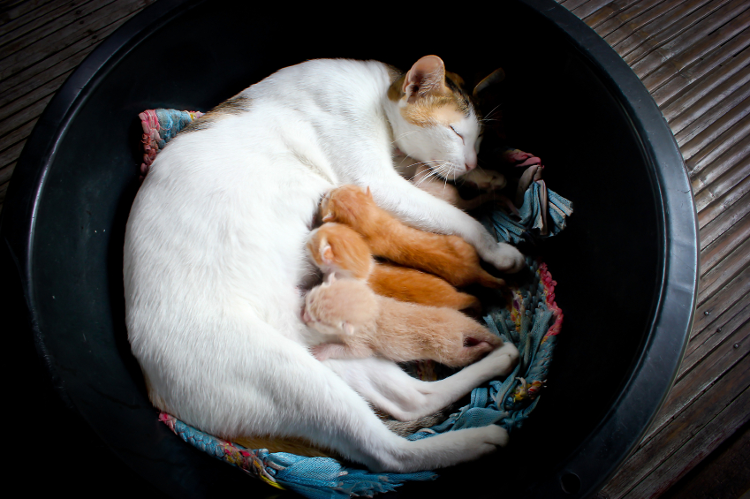The first time I adopted a kitten from a shelter I was 17. It was early June, and the shelter was full to the brim with adorable kittens of all shapes and sizes. There were so many adorable balls of fluff it was hard to choose, but when I arrived at the very last cage I found a tiny black kitten, back turned to me. I reached through the bars of the cage and stroked his back and he gave me the most hopeless look I’ve ever seen. I found the one.
As I was filling out paperwork to adopt him, I learned he was literally five minutes away from being euthanized because the shelter was so crowded — and black cats are the least adopted cats. Once I took him home, he started purring non-stop. He purred like that right up until he died of kidney disease fifteen years later (RIP, Spike, you were the best cat ever).
We have too many cats without homes in this country. It’s hard to estimate the number of stray cats living in the United States, but the ASPCA puts the number near 70 million. Sadly, the vast majority these kittens grow up, live, and die on the streets or in rural areas — where they must cope with parasites, disease, and predators without the benefit of veterinary care. In addition, this massive number of stray cats has wrecked havoc on the bird ecosystem in the USA.
What’s surprising about the sheer number of cats is how infrequently cats can get pregnant. Female cats tend to go into estrus (heat) only twice a year — typically in spring and again in autumn. However, the average litter ranges from four to six kittens. So that means there are a lot of new kittens each and every year.
As you might guess, numbers like this put a lot of seasonal strain on the rescue and shelter organizations that attempt to spay, neuter, feed, and find homes for the millions of kittens born each year.
Fortunately, there are a few things we, as cat lovers, can do to help ease that burden and improve the lives of kittens born as strays.
Spay and Neuter!
It used to be cute to allow your cat to get pregnant, particularly if you had kids, so they can watch the cycle of life first hand. But almost 8,000 cats are put to sleep in shelters each DAY in this country. That’s much less cute.
So you need to spay or neuter any cats in your home. A female cat can become pregnant at as young as 5 months. This is especially important if you have cats that spend any time outdoors. You don’t need your female cat coming home pregnant, or your tom impregnating every female stray in the area.
If the expense of a spay or neuter is a budget-breaker, don’t worry—there are ways you can keep costs low. Both the Humane Society and the ASPCA maintain online listings of reduced-cost programs that can help. And local animal welfare organizations frequently offer spay and neuter discounts for brief periods during the year. Several years ago we welcomed a new kitten into our home through a reduced-cost adoption special offered by a local SPCA branch, and she’d already been spayed.
Catch and Release Feral Cats
If you notice that your neighborhood is home to stray cats that are too feral to approach, let alone catch, check with your local Humane Society’s or other rescue groups for ways you can help maintain the health of these animals. Often you can catch them with traps, get them neutered, and release them at next to no cost and without ever handling the cats.
Foster Cats/Kittens
Shelters and rescue organizations are likely to have more kittens than they can handle. By fostering one or more kittens, you can provide a safe environment for the animals and ease overcrowding at the shelters. In most cases, you will care for the kittens for a few weeks while the shelter searches for a forever home for them. The latest addition to our family, Louie, joined our family after we sheltered him and his brothers for a few weeks.
No More Pet Stores: Adopt!
Of course you may find you have room in your home and heart for another pet. We’ve fostered and adopted many times over the last 20 years and we love it. Check online, and you’ll discover a wide range of rescue organizations, shelters, and local vets who can help smooth the path toward adopting either an adult cat or kittens. Another plus is that such organizations usually have provided the animals with basic medical care (vaccinations, deworming, etc.) prior to making the animal available for adoption.
Hopefully with everyone doing their part we can not only reduce the stray cat population but help shelters and rescue organizations care for and place this season’s kittens in loving homes.







Thanks for the outstanding advice, it really is useful.